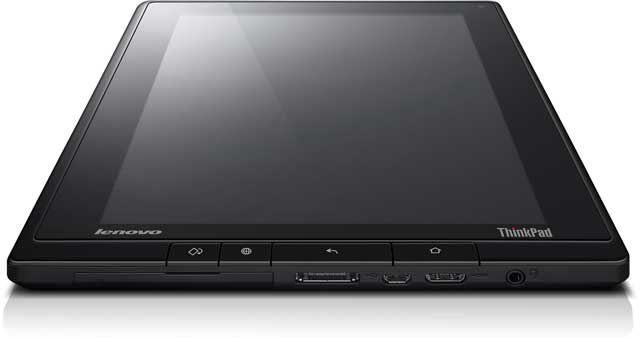This series of reviews will focus on a single aspect per part. The final part will sum up what I think. In this second part the focus is on interaction with the device
Positive
- One very useful feature which Android systems have got working magically is widgets. Widgets rock! Information which is instantly viewable with minimal input from the user. All you have to do is turn on (or wake up) the device and the widget tells you all that you need to know. Weather, email, social media snippets, etc. This is an area which is severely lacking in Apple devices. I would love to have widgets on my iPad.
- The screen/display is great. Super clear and crisp. Good colour balance and photos look fantastic.
- The pressure sensitive stylus input is unique and fun. It takes a while to adjust to but opens up some great possibilities. View the video above to get a sense of what the stylus can do. I have an artist friend who sent me a sketch he made using his Thinkpad Tablet and I think it's great that a more analogue creative process can be achieved with a digital tablet (and yes, for tech geeks out there, I know that it's not really analogue, but the technology will improve so that you can't tell the difference for most purposes)
- This might sound minor, but it's actually quite a pain. I found the scrolling/swiping just a tiny bit laggy and unresponsive at times. It feels just a hair off which really bugs me but I guess you would adjust to this over a longer period of use. Would this be a problem for students (or even the average teacher)? I don't know for sure. I'm not even prepared to guess.
- Menus are not quite as intuitive as I would like. As I get older, I want things to work perfectly. I don't want to have to try three or more different things before I find the right way. For many teachers they just want the tool to work without having to learn how to use it too much. This is something that most manufacturers and software designers severely under-appreciate. It's even worth sacrificing a little speed, functionality, and security to have a better experience in this area.
- The Android colour scheme is rather dark which works against my style of creativity. I prefer less severe and more vibrant colours. This might be able to be changed in the themes (I couldn't work it out), or if something like a super-AMOLED display is used in future it wouldn't matter. I've used my wife's Samsung Galaxy Nexus and even the dark colours on the display seem bright somehow.
- I think that the stylus (sorry, digitizer pen) should have a softer tip, or at least the option of a softer tip. This would be more intuitive and feel less like you're hitting the computer. The artistic users of the pen would appreciate it and those jotting notes would enjoy the use of it a whole lot more. The hardness is certainly rugged though, and gives you confidence in the durability and scratch-resistance of the screen.
- Another digitizer issue is that the button is of little to no use. From what I can tell, there were no actual functions which could be performed, though I've read that it can be used as a right-clicker or to select text. Both of these functions can be completed using a long-press in any case.
A final comment on the interaction with the device
It's actually quite hard to be overly negative towards the Thinkpad Tablet. Each design feature has been deliberately decided upon for a particular use and it's really up to the user, who will invest in one, whether they want to use it in that way.
For most educational uses these negatives don't really matter. The only two are the lagginess (which is perhaps a consequence of trying to be too cutting edge with extra features) and the difficult to learn menus and processes, both of which are more an Android issue than a Thinkpad specific issue. And remember, I'm an Android fan saying that, so it's not a matter of laziness in learning something new which is potentially more adaptable.
The positive features of widgets and the fun stylus stand out above all of the negatives anyway, and those are the main (and lasting) interaction features which stay with you.
NEXT TIME: I'll look at apps which I've used and are available, and some which I would like to have but are not available just yet.



